It is 8th January and the cupboard, or rather the refrigerator, is looking bare. If, like me, you had ‘special’ things to eat and drink for the holiday,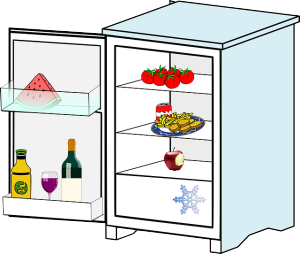 you too will have been eating up the remains, taxing one’s brain for ‘interesting’ new ways to use up parsnips (or whatever). Magazines are full of recipes which include Brussel sprouts. ( Apologies to those readers who do not, unlike the British, traditionally eat this vegetable at Christmas, but they are the lucky ones. ) As a recent post discussed, food was also often part of the seasonal decorations, but I’ve yet to see a sprout feature in any festive garlands.
you too will have been eating up the remains, taxing one’s brain for ‘interesting’ new ways to use up parsnips (or whatever). Magazines are full of recipes which include Brussel sprouts. ( Apologies to those readers who do not, unlike the British, traditionally eat this vegetable at Christmas, but they are the lucky ones. ) As a recent post discussed, food was also often part of the seasonal decorations, but I’ve yet to see a sprout feature in any festive garlands.
Co-incidentally, I have just received the second chunk of edited ‘Reconquista’, from Roz, my editor. This section sees our heroes journeying by land and sea and covers the period of Hanukkah and Christmas. Indeed, I received an e-mail from Roz on 18th December, saying that she got something of a shock that morning when she started work and found herself editing the chapter of my book set on that very day 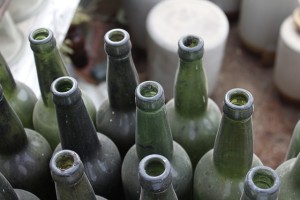 seven hundred and fifty-one years before.
seven hundred and fifty-one years before.
Three seasonal feasts occur. The first is at Hanukkah (one family central to the book is Jewish) and I researched Hanukkah customs and food before writing it. Much traditional Hanukkah food seems to have origins in the distant past – so that fits. The second two are Christmas feasts, one for the crew of the Teresa, an ocean-going carrack, and the other for the captains of the small fleet slowly forming around the Teresa in Algeciras Bay. In the language of a popular TV cookery competition, the first is mass catering and the second ‘fine dining’. My editor commented that these feasts sounded delicious, which prompts me to share their menus and the research which went into them.
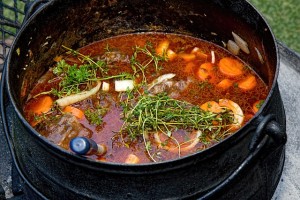 To take the Christmas feasts first. You wouldn’t think either was so difficult to devise. Until you remember that it’s 1264. So, no potatoes or certain types of corn, America hasn’t been discovered yet (or tobacco, my sailors can’t indulge in a smoke on deck). Vegetables are restricted to those grown in season and in that part of the world. Rice, both the Asiatic and African varieties, was introduced to the Iberian peninsular by the Moors, although it has been used as a staple foodstuff around the Mediterranean since Greek and Roman times, ( so that’s okay ). But bread is usually unleavened, it wasn’t possible to keep yeast fresh (there’s no freeze-drying or refrigeration). Meat is often highly cured, the better to keep for longer. The one thing bound to be plentiful is fish, but that wouldn’t have been regarded as special enough for a feast like Christmas. My sources were ‘Roman Cookery: Ancient recipes for Modern Kitchens’ by Mark Grant and ‘The Medieval Cookbook’ by the late Maggie Black.
To take the Christmas feasts first. You wouldn’t think either was so difficult to devise. Until you remember that it’s 1264. So, no potatoes or certain types of corn, America hasn’t been discovered yet (or tobacco, my sailors can’t indulge in a smoke on deck). Vegetables are restricted to those grown in season and in that part of the world. Rice, both the Asiatic and African varieties, was introduced to the Iberian peninsular by the Moors, although it has been used as a staple foodstuff around the Mediterranean since Greek and Roman times, ( so that’s okay ). But bread is usually unleavened, it wasn’t possible to keep yeast fresh (there’s no freeze-drying or refrigeration). Meat is often highly cured, the better to keep for longer. The one thing bound to be plentiful is fish, but that wouldn’t have been regarded as special enough for a feast like Christmas. My sources were ‘Roman Cookery: Ancient recipes for Modern Kitchens’ by Mark Grant and ‘The Medieval Cookbook’ by the late Maggie Black.
Fortunately, like most ocean-going vessels of that time and later, the Teresa carries livestock – cows and goats for milk, cream, cheese and meat and hens for eggs and meat. At Christmas time she is moored in Algeciras Bay, so her cook and cook’s boy have access to the market and souk in that town and, 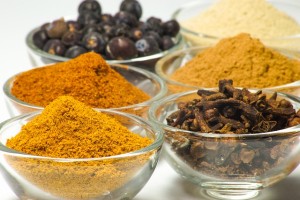 therefore, to a wide range of spices and herbs, as well as poultry and meats. So I was able to form a convincing and tasty-sounding feast or two.
therefore, to a wide range of spices and herbs, as well as poultry and meats. So I was able to form a convincing and tasty-sounding feast or two.
The crew partakes of a meat stew, with ox tails and kidneys added, laced with spirits and served with griddled, spicy flatbread and spicy sausage, followed by boiled fruit puddings, flambed in brandy. They drink ale, wine and a rum-like spirit (and lots of it, all but the sailors on watch are sozzled by the end of the afternoon). The officers’ dinner, inside the main cabin, is grander. They eat baked nut-biscuits with their sherry-like wine before the meal. The main course is goose, stuffed with a series of smaller birds, each 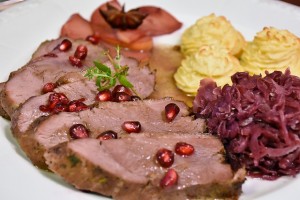 inside the other, and braised in spiced wine with pomegranate seeds, served with vegetables and rice. To follow there are cheeses made from goats and cows milk and little cakes. All is washed down with wines white and red. Many of the officers fall asleep very soon afterwards.
inside the other, and braised in spiced wine with pomegranate seeds, served with vegetables and rice. To follow there are cheeses made from goats and cows milk and little cakes. All is washed down with wines white and red. Many of the officers fall asleep very soon afterwards.
In Jerez at Hanukkah Nathan and his father, Simon, are taken pity on by the neighbourhood women and their charity becomes competitive. So the Calamiel’s table groans under pastries and jellied doughnuts, but also cakes and cheeses ( in remembrance of Judith, who fed cheese to Holofernes ). Latke, or pancakes, also feature, and fritters. These are all versions of foods still eaten, perhaps in more modern forms, at Hanukkah today.
So my characters certainly ate well on their feast-days. Me, I’m going on a diet.
If you enjoyed reading this article you might also enjoy The Twelfth December – Advent Zambomba!


 RSS – Posts
RSS – Posts